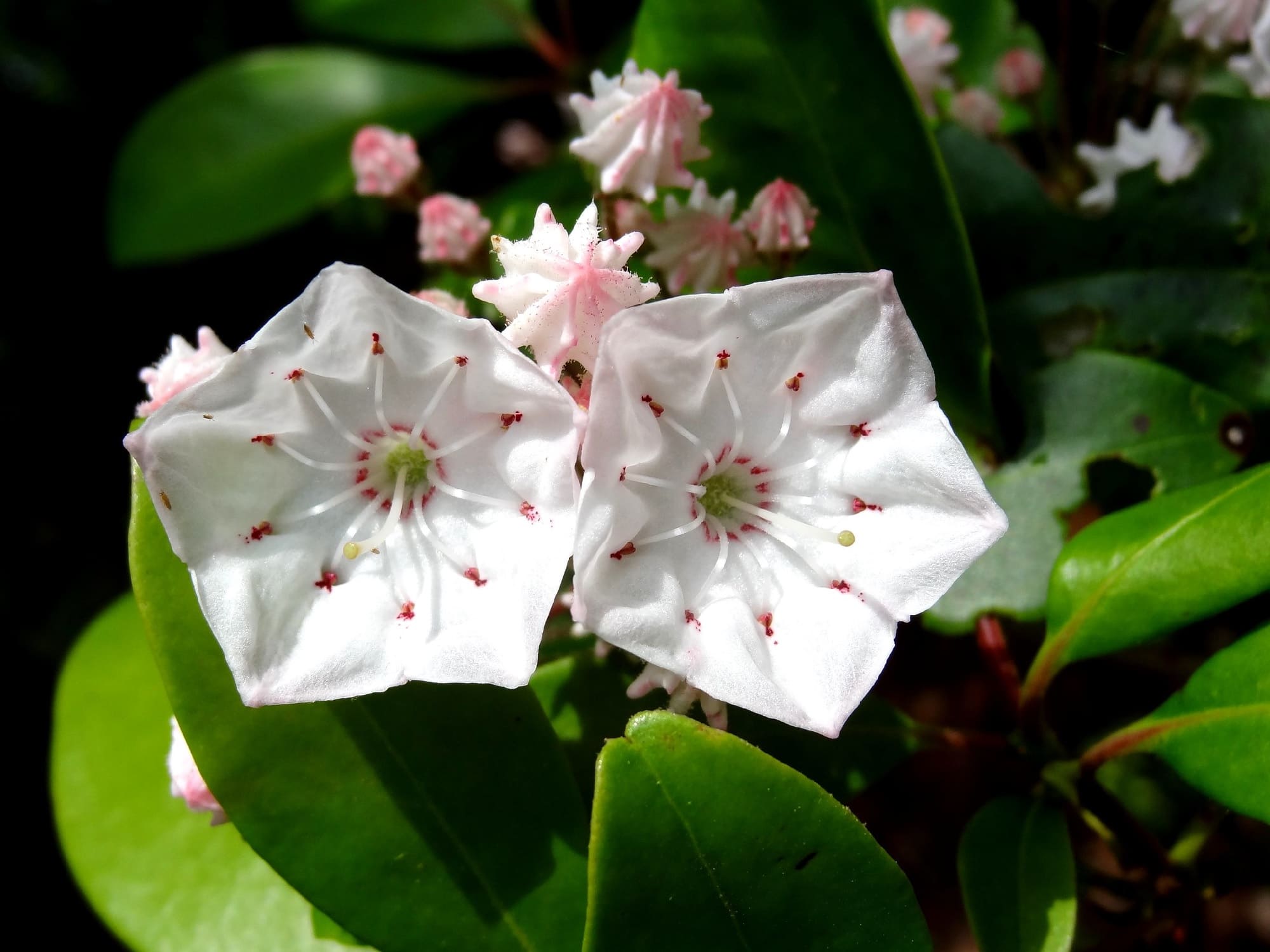
Photo Credit
Bob Pool
Subhead
Learn How to Plant, Grow, and Care for Mountain Laurel Shrubs
The Almanac Garden Planner - Use It Free for 7 Days!
Plan your 2025 garden with our award-winning Garden Planner.
Read Next
Varieties

- ‘Sarah’ is a variety with deeply pink blooms leaning towards cherry. It’s a smaller variety, often reaching only 5 to 7 feet tall, and perfect for tight spaces.
- ‘Kaleidoscope’ blooms in red with white fringes, a stunning display. A midsize variety, it reaches 8 to 10 feet tall and wide when mature.
- ‘Snowdrift Mountain’ lives up to its name, with all-white blooms. This smaller variety is perfect for containers and typically grows only 3 to 4 feet tall.
- ‘Minuet’ has a unique coloring, white blooms have a center ring of maroon for a striking display. It’s a dwarf cultivar ideal for small spaces and containers.
Gardening Products
ADVERTISEMENT
Comments
Add a Comment













